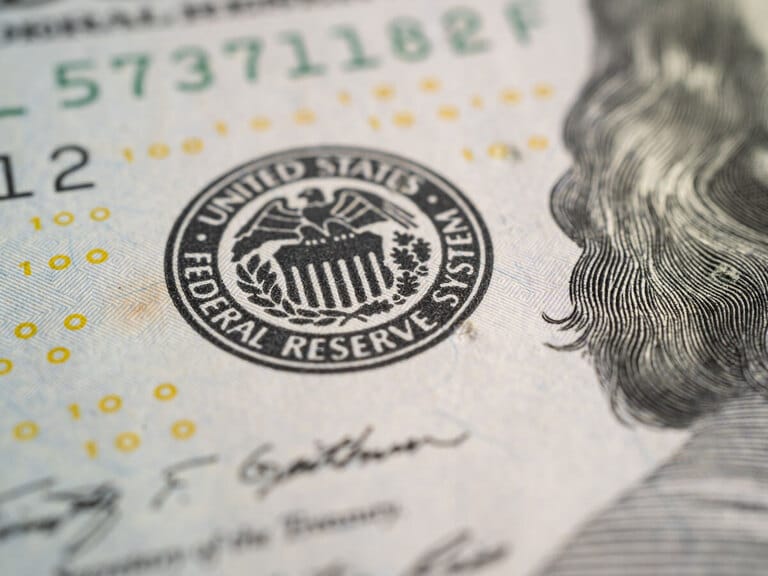The iShares US Energy ETF has posted impressive gains so far in 2022 as key holdings like Exxon and Chevron post record profits amid rising oil and gas prices. However, the upward trajectory of these stocks has recently slowed after the US Inflation Reduction Act was passed, which is expected to curb future appetite for fossil fuels. As a result of the cost-of-living crisis and climate change, investor sentiment is forecasted to decrease in the long term.
The iShares US Energy ETF [IYE] has outperformed the broader market in 2022. The fund soared 47.2% year-to-date to close at $45.64 on 29 August, compared to the S&P 500’s 15.9% decline over the same period.
In the last three months, however, iShares’ US Energy ETF’s performance has stayed flat, as energy stocks slipped amid increasing fears of a global recession. The fund has pulled back 7.4% since hitting a 52-week high of $49.31 during intraday trading on 8 June.
The ETF, which had $2.1bn in assets under management on 30 August, tracks an index composed of US equities in the energy sector, giving investors exposure to companies that produce and distribute oil and gas.
It has benefited from the gains seen in energy majors so far in 2022 as the cost of oil spikes alongside increased demand, due to factors including the war in Ukraine and supply issues. On 9 August, when oil pipeline flows to parts of central Europe were halted due to a pay dispute, the fund’s shares rose 2%.
Oil and gas prices have been so volatile in 2022 that hedge funds have reduced their trading activity in the area to the lowest in seven years, according to Reuters analysis. The iShares US Energy ETF has a three-year beta — a measure of systematic risk — of 1.53, suggesting it’s a riskier prospect than the general market but potentially more profitable. The sector has been one of this year’s rare winners amid a gloomy broader picture, with the fund returning 53.69% year-to-date as of 30 August.
Exxon and Chevron lead gains in IYE ETF
Of the iShares US Energy ETF’s 42 holdings, two leading oil majors dominate. Exxon Mobil [XOM] had the biggest weighting at 20.66% as of 30 August, worth $462m, followed by Chevron [CVX] at 16%, worth around $354m. Alaska’s largest crude oil producer ConocoPhillips [COP] is the fund’s third largest holding at 7.46%, and fourth is EOG Resources [EOG] at 4.22%.
At the end of July, Chevron and Exxon both hit headlines and attracted criticism, when they posted record quarterly profits in the wake of soaring energy prices, which has sharply hit consumers’ pockets.
Exxon announced Q2 profits of $17.9bn, a record quarterly figure and close to four times more than the same period in 2021. Chevron, meanwhile, posted a record $11.62bn at its Q2 earnings release.
The positive earnings reports were a boost to both stocks. Shares in Exxon are up a hefty 57.5% year to date, while Chevron’s share price is up 38% over the same period. However, Exxon and Chevron shares have both tailed off from earlier peaks, suggesting a reversal may be on the cards. In July, Stewart Glickman, an energy equity analyst at CFRA, told Reuters. “Right now... the biggest fear you should have if you’re an energy investor is that we get a sharp recession.”
The rise of ‘anti-ESG’ ETFs
Given the cost-of-living crisis, the climate crises and spiralling prices at the pumps, there’s been a vocal backlash against oil companies’ profits this year – including from US president Joe Biden, who commented: “Exxon made more money than God this year.”
On its website the iShares US Energy ETF states that it does not explicitly seek to follow a sustainable, impact or ESG investment strategy. For this reason, it has been termed a so-called ‘anti-ESG’ ETF, along with the recently launched Strive US Energy ETF [DRLL], backed by venture capitalist Peter Thiel and hedge fund manager Bill Ackman.
With an expense ratio of 0.41%, it’s thought that Strive’s US Energy ETF is positioning itself against the iShares US Energy ETF. However, Strive’s fund goes further, with shareholders able to encourage oil companies to “drill more and frack more”, according to Vivek Ramaswamy, cofounder of Strive, reported Bloomberg on 10 August.
But these funds’ time in the sun might soon reach an end. The passing of the climate bill, or Inflation Reduction Act, by the US Senate and House in August, has boosted demand for clean energy ETFs, such as the iShares Global Clean Energy ETT [ICLN]. The fund rose by 14% in the two weeks to 8 August.
Projected steps to minimise climate change still factor in substantial fossil fuel consumption to 2050. According to McKinsey’s 2022 global energy report, the market is approaching peak oil demand between 2023 and 2025.
Bill Smead, chief investment officer at Smead Capital Management, weighed in, telling CNBC while oil stocks have fallen from recent peaks, there’s still a case for buying them while energy prices remain high.
Continue reading for FREE
- Includes free newsletter updates, unsubscribe anytime. Privacy policy





